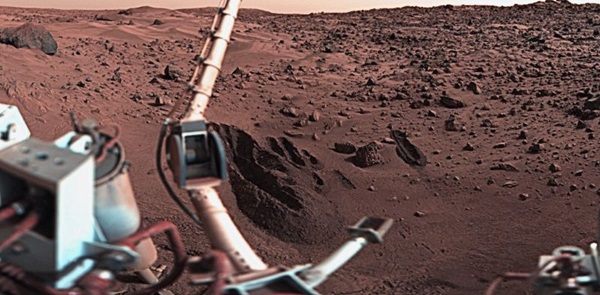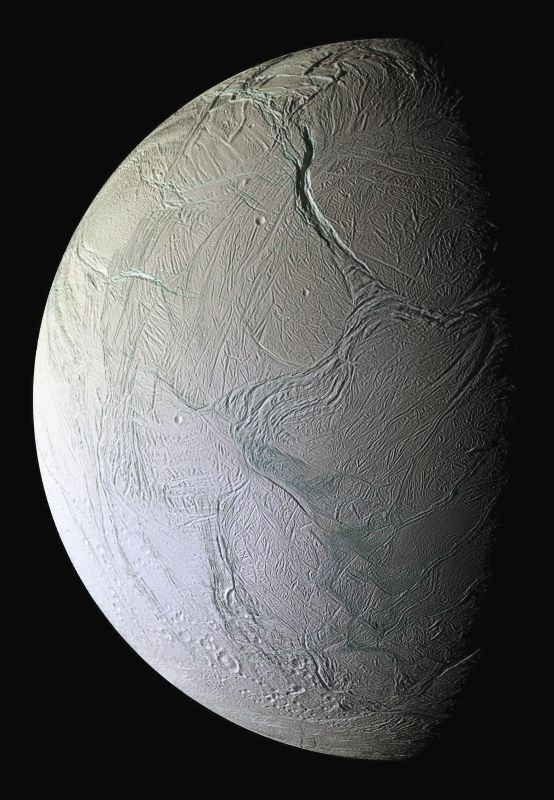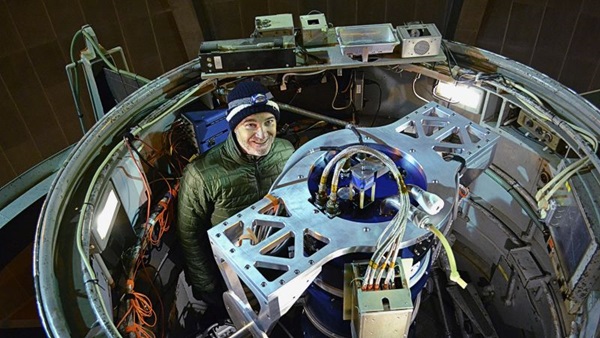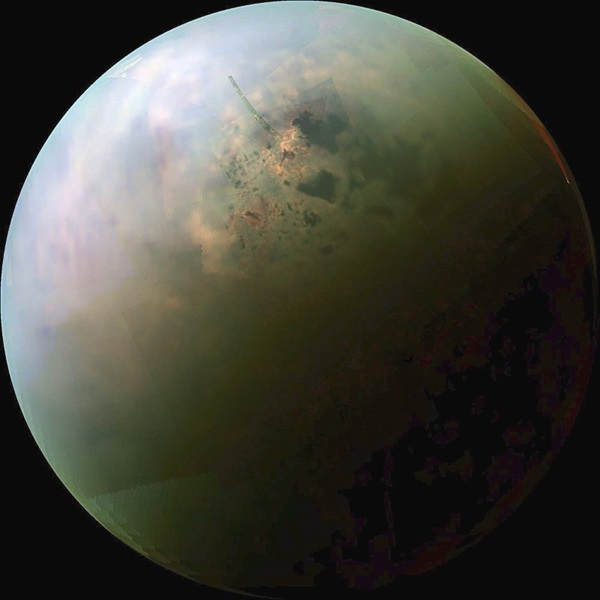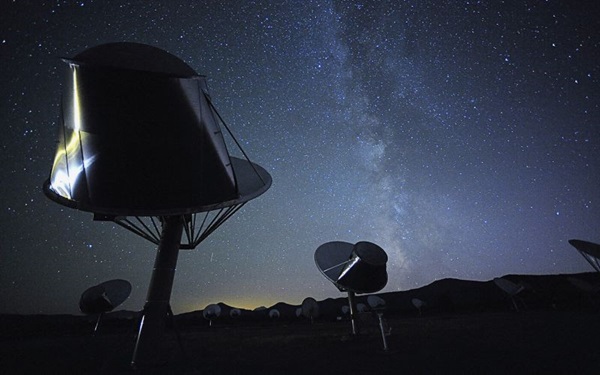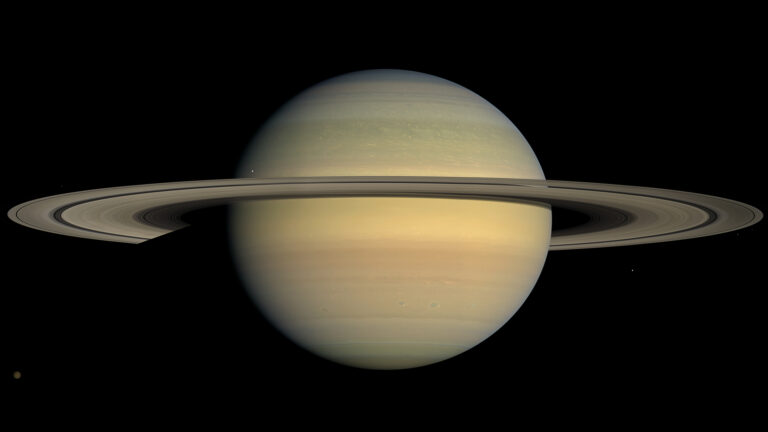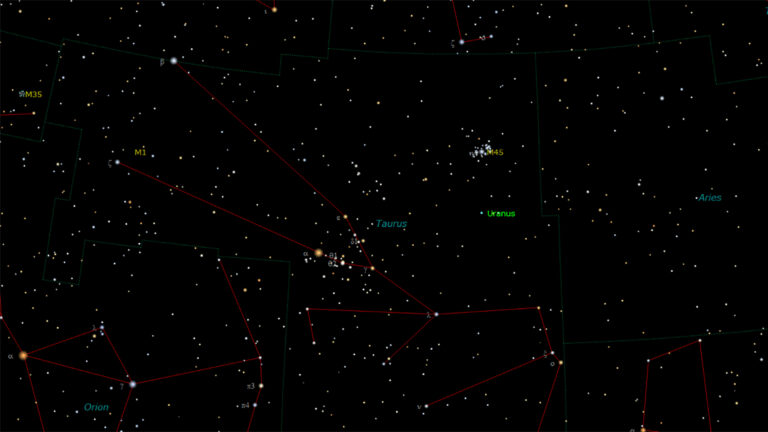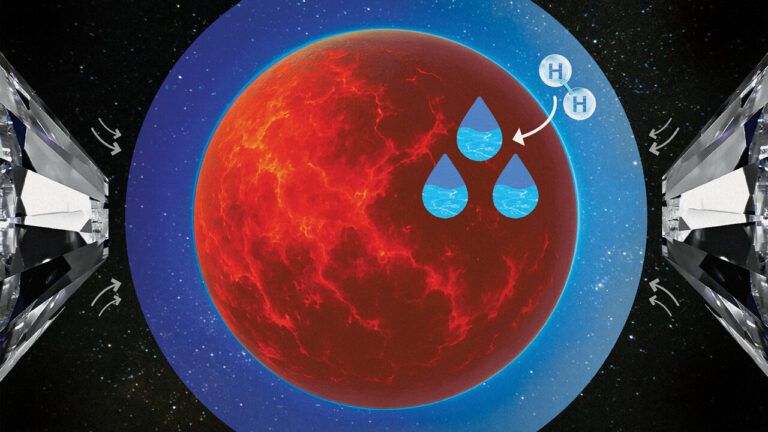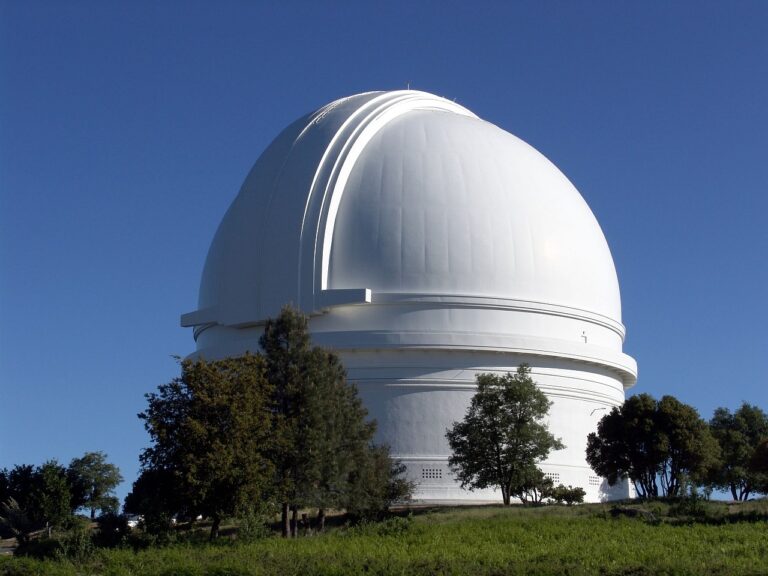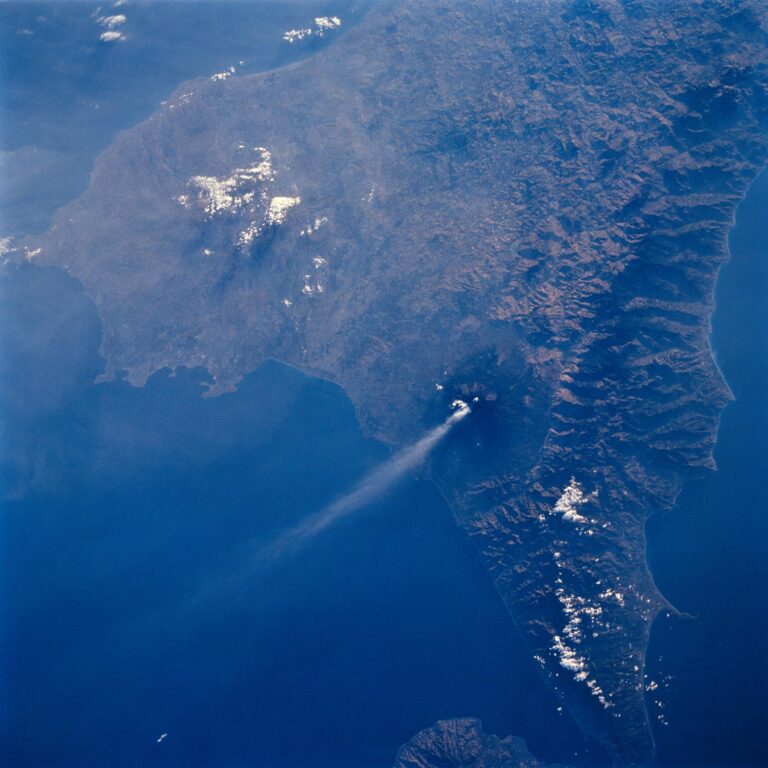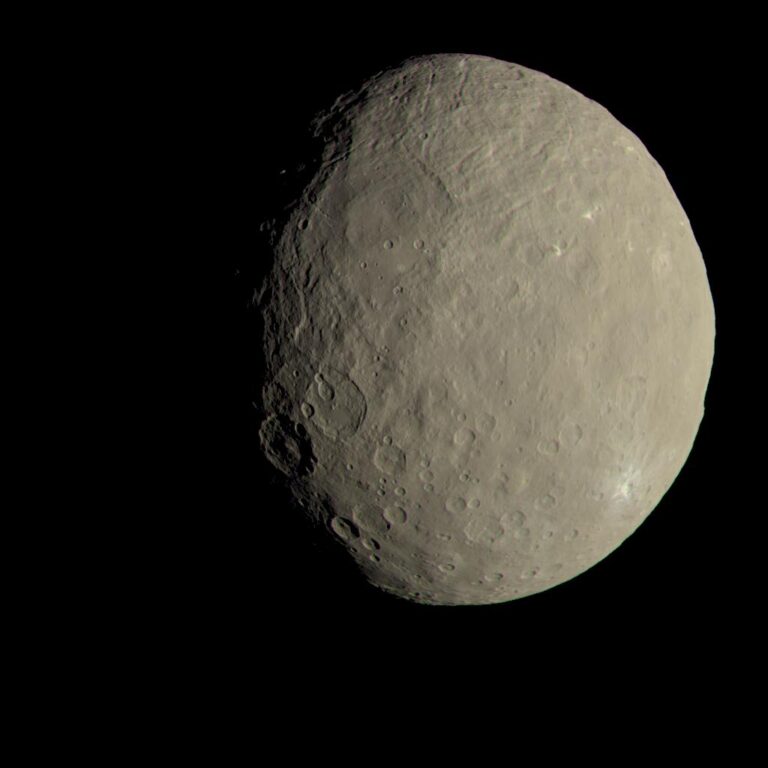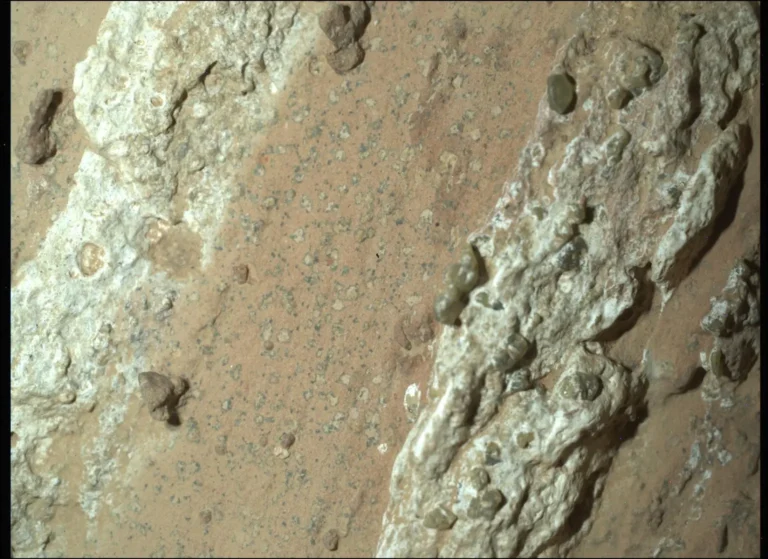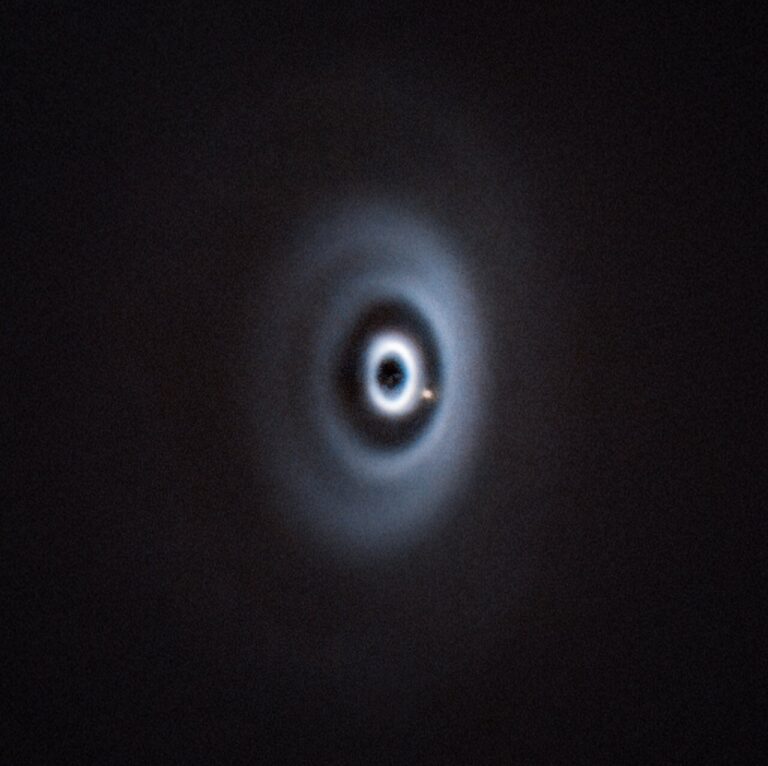Key Takeaways:
- Scientists are actively searching for life beyond Earth using various methods.
- Mars and icy moons like Europa and Enceladus are promising places to look for life.
- Advanced telescopes are being developed to analyze exoplanet atmospheres for signs of life.
- Researchers are also searching for signals from intelligent extraterrestrial civilizations.
For millennia, great minds have contemplated the origin, nature, and prevalence of extraterrestrial life. But despite the impressive brainpower brought to bear, the frustrating reality is that we really don’t know who or what is out there. Scientists have good reason to think billions of inhabited worlds are sprinkled throughout our galaxy in a universe teeming with life — perhaps even technologically advanced life. But maybe the genesis and long-term survival of life on Earth has been a once-in-a-galaxy fluke. Maybe we’re living on one of the precious few miracle worlds where life evolved to staggering levels of diversity and complexity.
Scientists can debate these questions until they’re blue in the face. And they have. But the only way to find out the definitive answer is to observe and explore. And here’s the good news: Never before have scientists had so many tools at their disposal. Excitement is palpable that in 10 to 20 years, astrobiology could make the critical leap from theory to direct observation, no longer suffering the ignominy of being a science whose subject matter is not proven to exist.
Although there’s no official competition or roadmap, scientists across multiple disciplines are pursuing three general pathways for detecting extraterrestrial life. First, they’re hunting for life in the solar system using robotic or sample return missions. Second, they’re searching for compelling evidence of life-bearing worlds by probing exoplanet atmospheres. Third, they’re chasing the ultimate jackpot: evidence of intelligent life through purposefully seeking out alien signals or receiving them by serendipity.
Life on Mars
A major challenge in any search for life is defining exactly what we’re looking for. Terrestrial life assumes such a dizzying variety of forms — from acid-loving bacteria to kangaroos — that attempts to define it inevitably leave out entire classes of critters. Plus, what’s out there in the greater universe might be even more extreme than anything we can imagine from our limited geocentric perspective.
In their recent book, Imagined Life, planetary scientist Michael Summers and physicist James Trefil identify three kinds of life: life like us, life not like us, and life really not like us. The first centers around all terrestrial biota: life based on organic (carbon-based) chemistry using liquid water as a solvent. The second involves chemistry based on elements other than carbon, such as silicon. The third is the wild card: life-forms so far outside our conceptual horizon that we might not even recognize them as being alive.
Scientists are familiar with the first type of life, so they have some idea of what they’re looking for. Better yet, solar system exploration over the past five decades has greatly increased the inventory of relatively nearby candidate worlds that might harbor some form of familiar biology.
Mars remains the most compelling target due to its proximity and overwhelming evidence that liquid water once covered much of its surface. Claims of martian life date back more than a century, to Percival Lowell’s popularization of its fabled canals. In 1976, the Viking Labeled Release experiments returned positive test results for metabolizing microbes, a result that most (but not all) scientists attribute to active soil chemistry. Two decades later, a NASA and Stanford University team led by David McKay reported evidence for ancient microorganisms in Mars meteorite ALH 84001, a claim that remains in dispute.
Intriguingly, NASA’s Mars rover Curiosity, along with various telescopes and orbiters, have detected faint wisps of methane (CH4) in the planet’s atmosphere at levels up to a few parts per billion. About 95 percent of Earth’s atmospheric methane is biogenic, raising hopes that there could be methane-producing martian microbes (methanogens) eking out an existence around underground aquifers. But the detections remain controversial. For example, the European Space Agency’s (ESA) Trace Gas Orbiter has detected nary a whiff. And even if the methane is real, scientists have identified numerous geological and chemical processes that can produce the gas without any contributions from life.
The next Mars rover, Perseverance, is planned to arrive in Jezero Crater, an ancient lakebed, on February 18, 2021. It’s not carrying any instruments specifically designed to detect extant life, but its imaging systems could theoretically reveal macroscopic life-forms or fossils.
“Most of the professional community thinks that’s extremely unlikely, but not impossible,” says team member Jim Bell of Arizona State University. Bell thinks it’s more likely that Perseverance’s powerful instruments could detect complex molecules associated with biological processes. More important, Perseverance will drill down several inches to collect dozens of rock and regolith samples for later return to Earth. NASA and ESA are collaborating on a $7 billion sample return mission that could return martian material by 2031. NASA will provide the lander and ascent vehicle to collect the samples — left by Perseverance — and launch them into Mars orbit. ESA will contribute the spacecraft that will snatch the samples and transport them to Earth.
ESA is also sending a Mars rover, named Rosalind Franklin after the great British scientist. The rover was originally scheduled to launch this July, but has been delayed until 2022 because of problems while testing its parachute. Rosalind Franklin will drill about 6.5 feet (2 meters) below the surface, which is ravaged by solar ultraviolet radiation that quickly breaks down organic molecules. The rover carries cameras and spectrometers capable of detecting chemical and mineral signatures of past or current life.
Finding life on Mars would be a monumental breakthrough. If that life turns out to be similar to that on Earth, it would imply that either it was transported inside a meteoroid from one planet to another or that both worlds were seeded from a common outside source. It would be amazing to learn that planets can exchange life and that terrestrial life might have originated on Mars. But if martian life has a different chemical makeup, is not based on cells, or utilizes information-encoding molecules other than DNA and RNA, it would strongly suggest that life originated independently on two different worlds and took two different paths. This would then imply that life is widespread in the galaxy.
NASA Chief Scientist James Green says that even if Mars’ life came together exactly like it did here on Earth, its current form would be the result of many unique environmental factors. “When we bring it [martian life] back, we’re going to see that evolutionary difference. That’s what makes the whole field very exciting,” he says.
Ice worlds of the outer solar system
Humanity has long focused on Mars as the most promising abode of life. But interplanetary probes have greatly expanded the list to include worlds that might contain liquid-water oceans beneath their icy facades. Calculations by the late University of Arizona planetary scientist Adam Showman suggest there could be as many as 12 to 15 solar system worlds that harbor subsurface oceans. These include planets, moons, and even Kuiper Belt objects such as Pluto.
Like other scientists, Showman identified Europa and Enceladus as the most promising candidates. Both of these moons are tidally heated through gravitational interactions with their host planets (Jupiter and Saturn, respectively) and their nearby fellow moons. In both cases, models of these moons’ interior structures indicate that their oceans are sandwiched between an icy layer above and a rocky layer below. “This opens the possibility of water-rock interactions that could introduce biologically interesting chemicals into the ocean,” said Showman.
Life on such worlds could resemble the myriad bacteria, tube worms, clams, and other life-forms that thrive around hydrothermal vents on Earth’s ocean floors. These creatures draw their sustenance from nutrients expelled by the vents, not from sunlight.
The icy shells of Europa and Enceladus are relatively thin. In 2005, NASA’s Cassini spacecraft returned spectacular images of jets venting salty-ice particles into space from Enceladus’ south polar region. And in 2014, the Hubble Space Telescope first spotted evidence of plumes emanating from Europa’s south pole. In 2019, researchers released the best evidence yet that Europa’s plumes contain water. All these discoveries suggest that biogenic materials could exist at or near the surface.
NASA’s planned Europa Clipper mission will fly by its namesake moon 44 times starting in the early 2030s. Scientists expect it to confirm the existence of the world’s ocean, measure the ice shell’s thickness, and help researchers ascertain the moon’s biological potential. Green says that the spacecraft will be able to sample material in Europa’s plumes for possible evidence of organics and other indicators of life. This material, he says, might be coming from hydrothermal vents at the bottom of its global subsurface ocean. The spacecraft won’t be detecting actual life-forms, but it could conceivably provide compelling evidence that life is possible. And the results could, in turn, motivate the launch of a lander to sample surface material or even drill or melt through the ice to explore the ocean directly.
Finding life on a solar system ocean world would be an astrobiologist’s dream come true. It would imply a universe brimming with life — for, as Summers says, “Ocean worlds are probably commonplace in the galaxy.”
NASA is also planning to fly a robotic rotorcraft named Dragonfly on Saturn’s large moon Titan in 2034. Titan is the only satellite with a thick atmosphere, which is similar to Earth’s in terms of its surface pressure and nitrogen-dominated composition. Better yet, Cassini radar found dozens of lakes on Titan filled with liquid methane and ethane (C2H6). It is a world oozing with organic compounds.
At –290 degrees Fahrenheit (–179 degrees Celsius), Titan’s surface is probably too cold for life as we know it. But Dragonfly’s suite of instruments will study the moon’s chemistry, perhaps finding clues to how life got started on Earth. It might even get really lucky by detecting signs of life as we don’t know it. “Titan is a compelling target because it really would be life 2.0 — a very different basis for biology,” says University of Arizona astronomer Chris Impey.
Exoplanet atmospheres
Thanks to revolutionary advances in the discovery and characterization of exoplanets over the past 20 years, it is now conceivable that scientists could find the first strong evidence for extraterrestrial life on a planet outside the solar system.
As of late June, astronomers had discovered 4,274 planets outside our solar system. And thanks to space telescopes such as Hubble and Kepler, as well as numerous ground-based instruments, we have surprisingly detailed information about the size, mass, density, and even atmospheric composition of many of these worlds.
For now, the best information on exoplanet atmospheres comes from transit spectroscopy. In short, when a planet crosses, or transits, the face of its host star as seen from Earth’s line of sight, starlight passes through the planet’s upper atmosphere and interacts with the chemicals there. By comparing spectra taken during a transit to observations of the star alone when the planet is not transiting, astronomers can extract information about the planet’s atmospheric chemistry.
Make no mistake, these are exceedingly difficult and time-consuming observations. But several teams have used this technique to reveal atmospheric constituents on a few dozen exoplanets, finding chemicals such as water, carbon monoxide (CO), iron, magnesium, sodium, potassium, and even the rare elements scandium and yttrium.
“It is really the first time that we have probed the conditions on a habitable zone planet,” says Björn Benneke of the Université de Montréal in Canada, leader of one of the two teams that detected water vapor.
Current telescopes and instruments lack the resolution and sensitivity to reveal combinations of chemicals indicative of life on temperate terrestrial planets, such as free oxygen (oxygen such as O2 and O3 that is not bound to other elements), carbon dioxide, and methane. Scientists are particularly interested in finding evidence for “disequilibrium chemistry” — a blend of compounds that should not exist together in a planetary atmosphere without the existence of life. For example, without photosynthetic life to constantly replenish the supply, oxygen and methane would not coexist in Earth’s atmosphere. But, as Stephanie Olson of the University of Chicago notes, “Photosynthesis could look very different on other planets,” so the manifestation of disequilibrium chemistry would also look different.
Although the current generation of telescopes is not quite up to the task, the next generation might be. Once it launches and deploys (expected in 2021), NASA’s James Webb Space Telescope will conduct infrared observations of relatively nearby transiting exoplanets, especially super-Earths orbiting red dwarfs. But the telescope’s best bet will be finding planets with primitive life resembling that on early Earth, as most biosignatures present in exoplanetary atmospheres might not show up clearly due to the relatively modest spectral resolution of its instruments.
The scientific community has higher hopes for upcoming ground-based observatories such as the 24.5-meter Giant Magellan Telescope, the Thirty Meter Telescope, and the European Southern Observatory’s 39-meter Extremely Large Telescope, all of which could see first light by the end of the decade. These behemoths will be equipped with high-resolution spectrographs and other high-tech instruments to look for biosignatures at optical and near-infrared wavelengths. They will be particularly well-suited to detect free oxygen, a clear hallmark of life on our world.
Probably the juiciest target will be TRAPPIST-1, a red dwarf 40 light-years away. This diminutive star hosts seven transiting terrestrial-sized planets, at least three of which orbit within the habitable zone. NASA’s Transiting Exoplanet Survey Satellite mission is currently finding additional targets for follow-up study, as will ESA’s PLAnetary Transits and Oscillations of stars, or PLATO, mission when it launches in 2026.
One international team is developing the ExoLife Finder (ELF), which will be a 20- to 30-meter telescope (depending on funding) optimized for near-infrared observations of relatively nearby exoplanets. According to team member Jeff Kuhn of the University of Hawai‘i, ELF will employ a combination of advanced technologies to control the incoming light waves from the star so that the primary mirror behaves like a coronagraph — a tool astronomers use to block a star’s light and probe the area around a star for fainter objects. This will enable researchers to study a planet without its feeble light getting lost in the star’s intense glare.
And ELF could do much more than spectroscopy. “We’ve demonstrated how ELF can make images of the surfaces of exoplanets within about 30 light-years of the Sun,” says Kuhn. He adds that by watching a planet as it rotates on its axis, ELF could even “get an image of the surface and clouds.” The team is currently building a prototype telescope in the Canary Islands, miniELF, to test some of the technologies.
But even if astronomers find biosignatures in exoplanet atmospheres, it remains unclear whether the broader community will accept them as evidence of extraterrestrial life. “I don’t think any detection outside of the solar system is going to give 100 percent confidence that there is life on another planet. I think there will always be some chance that it isn’t life, some low-probability way that signature could be produced by nonlife processes,” says astronomer Johanna Teske of the Carnegie Institution for Science.
But she also points out that if astronomers can find multiple signatures that are difficult to produce via nonbiological processes, or if they find biosignatures on multiple planets, that would be “incredibly convincing.”
Further down the road, NASA’s Habitable Exoplanet Observatory (HabEx) mission would launch a 4-meter telescope around 2035 to conduct spectroscopy and imaging of terrestrial-size planets in habitable zones. NASA’s Large UV/Optical/IR Surveyor (LUVOIR) mission would launch an 8- or 15-meter telescope with a coronagraph in the late 2030s, for detailed characterization of exoplanet atmospheres and surfaces. As University of California, Santa Cruz, astronomer Joshua Krissansen-Totton points out, LUVOIR could find life on planets with alternative biospheres, with “weird combinations of atmospheric gases, hazes, or surface pigments.”
“I think, ultimately, something like LUVOIR or HabEx is going to give us the best chances of finding biosignatures because of the number of planets these telescopes plan to survey,” says Teske.
Seeking alien signals
And then there’s the ultimate jackpot, which could come from the Search for Extraterrestrial Life, or SETI. Finding direct evidence of an alien civilization would irrevocably change the course of history in ways nobody can predict. It would also show that intelligent life can survive technological adolescence.
Astronomers continue to scan the skies using large radio telescopes in the hopes of catching signals from advanced civilizations. In February, the Breakthrough Listen project publicly released nearly 2 petabytes of observational data, including scans of the galactic center and a brief survey of 20 nearby stars whose civilizations would see Earth transiting the Sun.
No definitive alien radio signals have ever turned up — a situation that skeptics call “The Great Silence.” But SETI astronomers rightly counter that the radio surveys conducted to date have barely scratched the surface in terms of stars in the sky and radio frequencies searched. The same goes for current optical SETI attempts to detect alien laser signals.
Traditional SETI using radio telescopes will progress in the coming years as more telescopes and new capabilities are brought to bear. But creative astronomers are looking to expand these approaches. Breakthrough Listen principal investigator Andrew Siemion says, “As SETI astronomers, we conduct our own experiments. But we also try to do our best to convince our colleagues to be on the lookout for things they don’t expect and not discount the possibility that their experiments might uncover evidence of an extraterrestrial intelligence.”
Penn State University astronomer Jason Wright has touted the idea that astronomers should be on the lookout for alien megastructures, large-scale astro-engineering projects such as Dyson spheres — vast swarms of spacecraft that advanced civilizations could use to harvest the energy of their host stars. These structures would presumably show up in infrared observations.
Wright also points out that we have barely begun to explore our own solar system. Other than Earth, the Moon is the only world whose entire surface has been imaged at high resolution. And right here on Earth, ground-penetrating radar has only just recently revealed ancient cities whose remains were hiding just a few inches underground.
In 2019, Adam Frank of the University of Rochester and Gavin Schmidt of NASA’s Goddard Institute for Space Studies published a peer-reviewed paper on the Silurian Hypothesis. This is the idea that an industrial civilization might have inhabited Earth millions of years ago. They concluded that erosion and plate tectonics would have almost completely erased all signs of such life from the geological record. But even though in their paper they “strongly doubt” such a past civilization ever existed, they suggested ways that geologists could look for signs that it did, such as “deeper exploration of elemental and compositional anomalies” in ancient sediments.
Who knows what lies below the surfaces of our neighboring worlds or could be orbiting the Sun, unbeknownst to us? “We might detect either a signal or other sign from, for instance, a free-floating solar system artifact,” says Wright.
Detecting technologically capable extraterrestrial life could help answer the profound question of whether life has a post-biological future, meaning computer or machine intelligence. “This is all conjecture, of course, but some sort of biological-machine hybrid seems a possible outcome for humanity. Or one could imagine self-replicating probes being sent out to prepare the ground for us biological beings. And if we think that lies in our future, then it could already have occurred elsewhere,” says physicist Stephen Webb of the University of Portsmouth in England.
Any detection of extraterrestrial life — primitive or advanced, near or far — will give humanity new insights into our place in the universe. Future discoveries will tell us how common life-bearing planets are, what types of planets can support which kind of life, and perhaps even whether radically different life-forms exist at all. Finding life elsewhere is one of the holy grails of science, destined to give us a new cosmic perspective.


